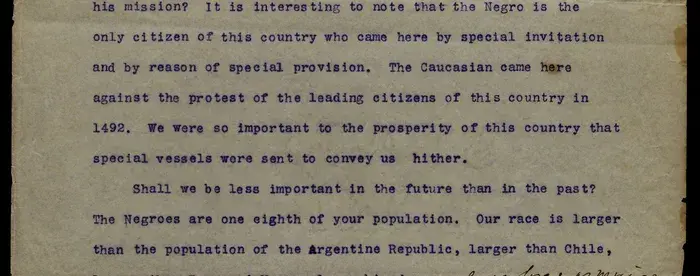Led by Prof. Nikki Brown (University of Kentucky)
Course Number: AMHI 677
Semesters: Fall 2025, Spring 2024
Image: Typed manuscript with handwritten notes for Address of Booker T. Washington, Principal of the Tuskegee Normal and Industrial Institute, Tuskegee, Alabama, before the Hamilton Club, Chicago, 1896 (The Gilder Lehrman Institute, GLC07934)
